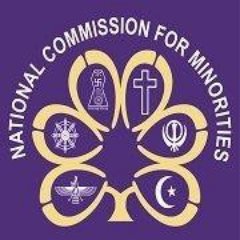
TEXT & CONTEXT: THE STATE OF SCHOLARSHIPS FOR MINORITIES
CURRENT AFFAIRS FOR 28TH AUGUST, 2023
TEXT & CONTEXT: THE STATE OF SCHOLARSHIPS FOR MINORITIES
Having India is home to over 30 crore people from religious minority communities. These include six religions notified under Section 2(c) of the National Commission for Minorities Act, 1992.
Among them, Muslims make up the largest religious minority. However, their participation in salaried jobs is low, with most of them working in the informal sector.
• The Justice Rajinder Sachar committee was constituted to look into the social, economic and educational standing of Muslims in India. In its report the Committee concluded that Muslim minority was neglected in almost all dimensions of development.
• Around the same time, the government accepted the demand for a Ministry of Minority Affairs in 2006. The new ministry was to ensure "a more focused approach" on issues affecting the notified minorities, especially "educational empowerment, economic empowerment, infrastructure development, and special needs."
• Over the past 20 years, the Centre has implemented roughly 20 schemes to provide educational empowerment to religious minorities.
The Pre-Metric Scholarship scheme was one of the first central sector programmes implemented by the Ministry. Other initiatives include, the Merit-cum-Means based Scholarship Scheme, the Maulana Azad National Fellowship scheme that provided financial assistance for five years to research scholars pursuing M.Phil and Ph.D, the Padho Pradesh Scheme to provide better opportunities for higher education abroad, and the Begum Hazrat Mahal scheme for meritorious girls to pursue higher secondary education, among several others
• Why in news?
In the past few years, the Centre has discontinued two key educational schemes for religious minorities, and the budget dropped for some of the schemes mentioned above.
• The NITI Ayog in its Strategy Document-2018, points out that affirmative action is the need of the hour to improve the socio-economic status of religious minorities, particularly Muslims.
• With the enactment of the NCM Act, 1992, the Minority Commission became a statutory body and was renamed as the National Commission for Minorities.
• In 1993, the first Statutory National Commission was set up and five religious communities- Sikhs, Muslims, Buddhists, Parsis, and Christians were identified as religious minorities. Jains were added in 2014.
• Article 29 provides that any 'section of the citizens' residing in any part of India having a distinct language, script or culture of its own, shall have the right to conserve the same.
It grants protection to both religious minorities as well as linguistic minorities.
However, the SC held that the scope of this article is not necessarily restricted to minorities only.
• Under Article 30, all minorities shall have the right to establish and administer educational institutions of their choice.
The protection under Article 30 is confined only to minorities (religious or linguistic).
